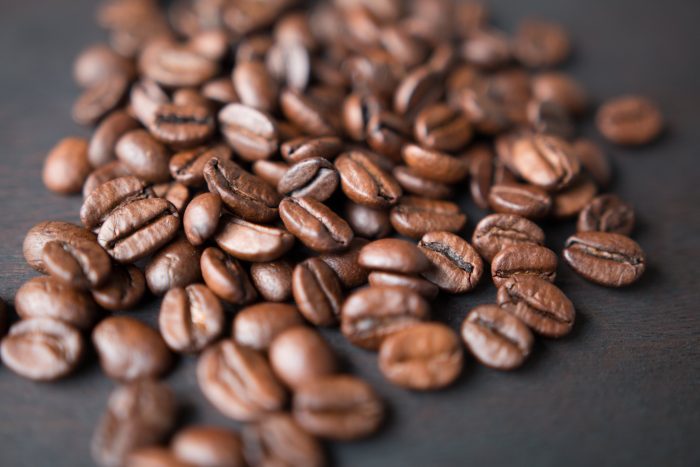Decaf Coffee – Is It a Better Substitute for the Real Thing?

I have learned from the many cleanses I have done that my body is sensitive to caffeine. A cup of decaf in the morning is enough to get me going. I tried giving up coffee altogether, but I love the smell and taste of it first thing in the morning. Coffee is the second most popular beverage in the world, behind tea. It’s hard to for some people to give up, including myself!
Until I became a Health Coach, I didn’t give much thought about how decaffeinated coffee was different from regular coffee, except for the significant reduction in caffeine. As a coffee lover who is sensitive to caffeine, I started thinking… how does coffee become decaffeinated? I did a little research and what I found out made me think twice about where I buy my decaf coffee.
Here are a few facts about decaffeinated coffee:
- There is no such thing as caffeine-free coffee.
- Most decaffeinated coffee contains less than 10 milligrams of caffeine per serving (vs. 50-75 milligrams in regular coffee).
- About 12% of the worldwide coffee consumed is decaf.
- Different varieties of coffee beans contain different amounts of caffeine. For example, Robusta beans generally contain twice the caffeine of Arabica beans. This can lead to inconsistencies between brands.
- The first decaffeination methods used in the early 1900’s used a rinsing process that was banned because the chemical used was a known cancer-causing agent.
- Decaf coffee goes stale almost twice as fast as regular coffee.
- 70% of decaf coffee is decaffeinated with the help of solvents.
- Caffeine is water soluble.
- The most widely used solvents for decaffeination are methylene chloride and synthetic ethyl acetate.
Let’s look at how the decaffeination process works today. The goal is to remove the caffeine without compromising the flavor and integrity of the coffee bean. The process starts with green coffee beans, before they are roasted. The beans swell with water or steam so the caffeine can be extracted. To remove the caffeine, they can go through a solvent method, a carbon dioxide method, or a water method.
When one of the solvents is used, the solvent is circulated around the water soaked beans for about 10 hours, which causes the caffeine to be released. The beans are then drained to remove the solvent. This rinsing and draining process is repeated several times until only a small amount of caffeine is left, and the solvent residue remains very low. The beans are then steamed, which further reduces solvent residue. Another way is to directly soak the beans in the solvents, which is known as the “direct” method. Once decaffeinated, the beans are then dried back to their normal moisture level and roasted.
Methyl chloride is a one of the chemical solvents used to extract caffeine. The FDA has determined the potential health risks from the methyl chloride method are low (FDA, 1985), but the National Cancer Institute lists the solvent as a possible carcinogen. This is the solvent Starbucks uses for it’s decaf coffee, although they do now offer a decaf Sumatra blend that they say uses the carbon dioxide process. Dunkin’ Donuts and Coffee Bean also use methyl chloride.
Ethyl acetate is another solvent used. It is considered “natural” because it is a hormone found in plants. However, most ethyl acetate used in making decaf coffee is synthetic.
For me, these chemical solvents make me want to look for a safer alternative. There are two non-solvent methods used, carbon dioxide and water, which are preferable in my mind.
Carbon dioxide is used to “pressure cook” the water-softened coffee beans in stainless steel vessels. The high pressure turns the gas and liquid state of the carbon dioxide into a natural solvent that attracts the small caffeine molecules.
The Swiss Water Process is similar to the methyl chloride process, but with no chemicals. The caffeinated beans are soaked in hot water for a period of time, then drained. During the draining process, the water solution is passed through a carbon filter for caffeine removal. The decaffeinated water holds much of the flavor of the bean, and is returned to the beans for reabsorption of flavors and oils.
If you are a consumer of decaf coffee, or if you order a “half-caf” from your favorite barista, you may want to inquire about which method they use for decaffeination. Personally, I like the coffees that don’t use a chemical solvent. Only Swiss Water Method and the Carbon dioxide method can be considered organic. A safe bet is to buy decaf coffee that is certified organic, but that can be difficult to find at your average grocery store.
The following decaffeinated brands get my seal of approval:
- Whole Foods Allegro brand
- Trader Joe’s organic French Roast
- Caribou Coffee decaf, which has a proprietary method that mimics the Swiss Water process.
- Starbucks Sumatra Blend
Check out www.swisswater.com to find a clean decaf in your area. If you know of others, please comment below!
Sources:
http://www.scientificamerican.com/article/how-is-caffeine-removed-t/
http://coffeeandhealth.org
http://www.cariboucoffee.com/about-our-coffee/quality-advantage/all-natural-decaf
http://www.foxnews.com/leisure/2014/08/25/truth-about-decaf-coffee/
http://www.coffeeconfidential.org/health/decaffeination/


